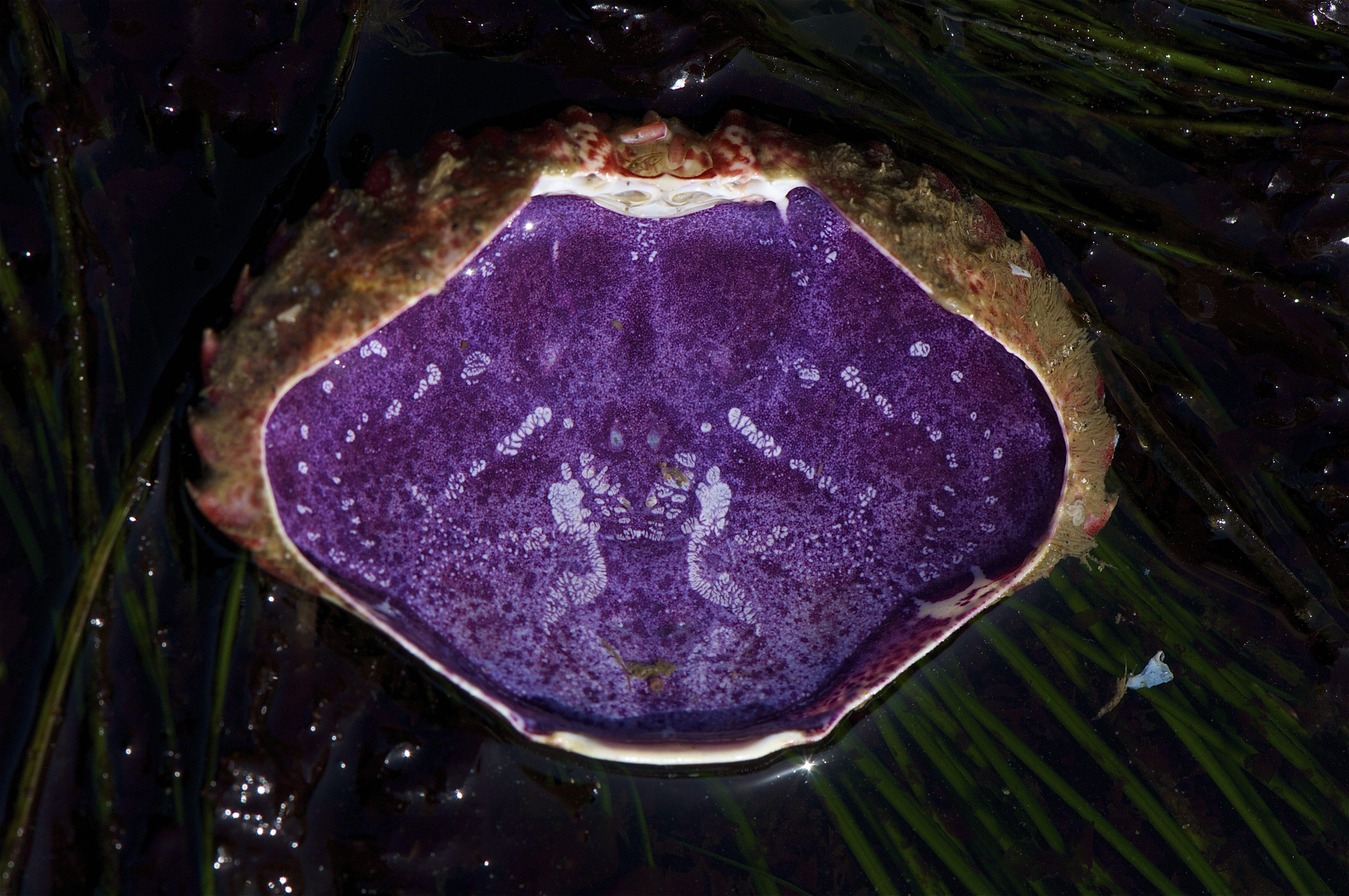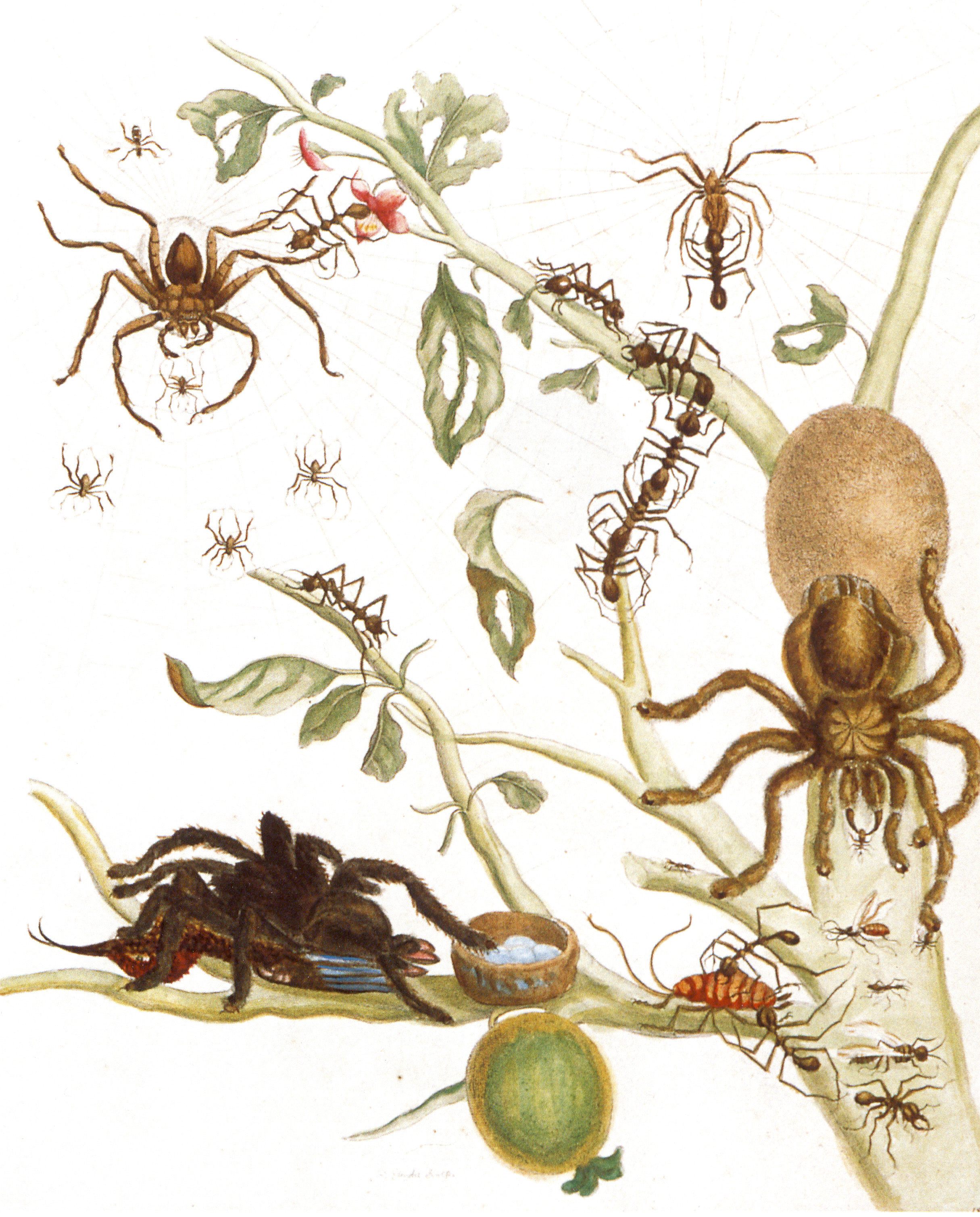|
Hemocyanin
Hemocyanins (also spelled haemocyanins and abbreviated Hc) are proteins that transport oxygen throughout the bodies of some invertebrate animals. These metalloproteins contain two copper atoms that reversibly bind a single oxygen molecule (O2). They are second only to hemoglobin in frequency of use as an oxygen transport molecule. Unlike the hemoglobin in red blood cells found in vertebrates, hemocyanins are not confined in blood cells but are instead suspended directly in the hemolymph. Oxygenation causes a color change between the colorless Cu(I) deoxygenated form and the blue Cu(II) oxygenated form. Species distribution Hemocyanin was first discovered in ''Octopus vulgaris'' by Leon Fredericq in 1878. The presence of copper in molluscs was detected even earlier by Bartolomeo Bizio in 1833. Hemocyanins are found in the Mollusca and Arthropoda including cephalopods and crustaceans and utilized by some land arthropods such as the tarantula ''Eurypelma californicum'', the emp ... [...More Info...] [...Related Items...] OR: [Wikipedia] [Google] [Baidu] |
Phenoloxidase
Polyphenol oxidase (PPO; also polyphenol oxidase i, chloroplastic), an enzyme involved in Browning (food process), fruit browning, is a tetramer that contains four atoms of copper per molecule. PPO may accept monophenol , monophenols and/or Pyrocatechol, ''o''-diphenols as substrates. The enzyme works by catalyzing the ''o''-hydroxylation of monophenol molecules in which the benzene ring contains a single hydroxyl substituent to Pyrocatechol, ''o''-diphenols (phenol molecules containing two hydroxyl substituents at the 1, 2 positions, with no carbon between). It can also further catalyse the oxidation of ''o''-diphenols to produce 1,2-Benzoquinone, ''o''-quinones. PPO catalyses the rapid polymerization of ''o''-quinones to produce black, brown or red pigments (polyphenols) that cause Browning (food process), fruit browning. The amino acid tyrosine contains a single phenolic ring that may be oxidised by the action of PPOs to form ''o''-quinone. Hence, PPOs may also be referr ... [...More Info...] [...Related Items...] OR: [Wikipedia] [Google] [Baidu] |
Metalloprotein
Metalloprotein is a generic term for a protein that contains a metal ion cofactor. A large proportion of all proteins are part of this category. For instance, at least 1000 human proteins (out of ~20,000) contain zinc-binding protein domains although there may be up to 3000 human zinc metalloproteins. Abundance It is estimated that approximately half of all proteins contain a metal. In another estimate, about one quarter to one third of all proteins are proposed to require metals to carry out their functions. Thus, metalloproteins have many different functions in cells, such as storage and transport of proteins, enzymes and signal transduction proteins, or infectious diseases. The abundance of metal binding proteins may be inherent to the amino acids that proteins use, as even artificial proteins without evolutionary history will readily bind metals. Most metals in the human body are bound to proteins. For instance, the relatively high concentration of iron in the human body is ... [...More Info...] [...Related Items...] OR: [Wikipedia] [Google] [Baidu] |
Hemoglobin
Hemoglobin (haemoglobin BrE) (from the Greek word αἷμα, ''haîma'' 'blood' + Latin ''globus'' 'ball, sphere' + ''-in'') (), abbreviated Hb or Hgb, is the iron-containing oxygen-transport metalloprotein present in red blood cells (erythrocytes) of almost all vertebrates (the exception being the fish family Channichthyidae) as well as the tissues of some invertebrates. Hemoglobin in blood carries oxygen from the respiratory organs (''e.g.'' lungs or gills) to the rest of the body (''i.e.'' tissues). There it releases the oxygen to permit aerobic respiration to provide energy to power functions of an organism in the process called metabolism. A healthy individual human has 12to 20grams of hemoglobin in every 100mL of blood. In mammals, the chromoprotein makes up about 96% of the red blood cells' dry content (by weight), and around 35% of the total content (including water). Hemoglobin has an oxygen-binding capacity of 1.34mL O2 per gram, which increases the total blood oxy ... [...More Info...] [...Related Items...] OR: [Wikipedia] [Google] [Baidu] |
Cephalopod
A cephalopod is any member of the molluscan class Cephalopoda ( Greek plural , ; "head-feet") such as a squid, octopus, cuttlefish, or nautilus. These exclusively marine animals are characterized by bilateral body symmetry, a prominent head, and a set of arms or tentacles (muscular hydrostats) modified from the primitive molluscan foot. Fishers sometimes call cephalopods "inkfish", referring to their common ability to squirt ink. The study of cephalopods is a branch of malacology known as teuthology. Cephalopods became dominant during the Ordovician period, represented by primitive nautiloids. The class now contains two, only distantly related, extant subclasses: Coleoidea, which includes octopuses, squid, and cuttlefish; and Nautiloidea, represented by '' Nautilus'' and ''Allonautilus''. In the Coleoidea, the molluscan shell has been internalized or is absent, whereas in the Nautiloidea, the external shell remains. About 800 living species of cephalopods have been ide ... [...More Info...] [...Related Items...] OR: [Wikipedia] [Google] [Baidu] |
Octopus
An octopus ( : octopuses or octopodes, see below for variants) is a soft-bodied, eight- limbed mollusc of the order Octopoda (, ). The order consists of some 300 species and is grouped within the class Cephalopoda with squids, cuttlefish, and nautiloids. Like other cephalopods, an octopus is bilaterally symmetric with two eyes and a beaked mouth at the center point of the eight limbs. The soft body can radically alter its shape, enabling octopuses to squeeze through small gaps. They trail their eight appendages behind them as they swim. The siphon is used both for respiration and for locomotion, by expelling a jet of water. Octopuses have a complex nervous system and excellent sight, and are among the most intelligent and behaviourally diverse of all invertebrates. Octopuses inhabit various regions of the ocean, including coral reefs, pelagic waters, and the seabed; some live in the intertidal zone and others at abyssal depths. Most species grow quickly, mature early ... [...More Info...] [...Related Items...] OR: [Wikipedia] [Google] [Baidu] |
Eurypelma Californicum
''Avicularia'' is a genus of the family Theraphosidae containing various species of arboreal tarantulas. The genus is native to Panama, the Caribbean and tropical South America. Each species in the genus has very distinguishable pink foot pads. Species belonging to this genus are amongst the relatively small exception of tarantulas that can jump moderate distances as juveniles, with most tarantulas being limited to lunges of 3-4 centimeters. Urticating hairs are distinct to new world tarantulas including the Avicularia that are attached to the spider's cuticle ''via'' a stalk. These spiny, barbed hairs are used as a defense against potential intruders as well as embedded into silk to protect the egg sac. In active defense, the hairs are released by contact with the stimulus and rubbed in. At least three species of Avicularia are threatened by habitat loss and illegal trafficking, due to their popularity as exotic pets. '' Avicularia avicularia'' are among the tarantulas most ... [...More Info...] [...Related Items...] OR: [Wikipedia] [Google] [Baidu] |
Emperor Scorpion
The emperor scorpion, ''Pandinus imperator'', is a species of scorpion native to rainforests and savannas in West Africa. It is one of the largest scorpions in the world and lives for 6–8 years. Its body is black, but like other scorpions it glows pastel green or blue under ultraviolet light. It is a popular species in the pet trade, and is protected by CITES to prevent over-collecting that might impact the species' survival. Description The emperor scorpion (''Pandinus imperator'') is one of the largest species of scorpion in the world, with adults averaging about in length and a weight of 30 g. However, some species of forest scorpions are fairly similar to the emperor scorpion in size, and one scorpion, ''Heterometrus swammerdami'', holds the record for being the world's largest scorpion at 9 inches (23 cm) in length. The large pincers are blackish-red and have a granular texture. The front part of the body, or prosoma, is made up of four sections, each with ... [...More Info...] [...Related Items...] OR: [Wikipedia] [Google] [Baidu] |
Scutigera Coleoptrata
''Scutigera coleoptrata'', also known as the house centipede, is a species of centipede that is typically yellowish-grey and has up to 15 pairs of long legs. Originating in the Mediterranean region, it has spread to other parts of the world, where it can live in human homes. It is an insectivore; it kills and eats other arthropods, such as insects and arachnids. Etymology In 1758, Carl Linnaeus described the species in the tenth edition of his Systema Naturae, giving the name ''Scolopendra coleoptrata'', writing that it has a "coleopterated thorax" (similar to a coleopter). In 1801, Jean-Baptiste Lamarck separated ''scutigera'' from ''scolopendra'', calling this species ''Scutigera coleoptrata.'' The word ''scutigera'' comes from "to bear" (''gerere)'' and "shield" (''scutum),'' because of the shape of the plates in the back of the chilopod. Morphology The body of an adult ''Scutigera coleoptrata'' is typically in length, although larger specimens are sometimes encounter ... [...More Info...] [...Related Items...] OR: [Wikipedia] [Google] [Baidu] |
Superfamily (proteins)
SUPERFAMILY is a database and search platform of structural and functional annotation for all proteins and genomes. It classifies amino acid sequences into known structural domains, especially into SCOP superfamilies. Domains are functional, structural, and evolutionary units that form proteins. Domains of common Ancestry are grouped into superfamilies. The domains and domain superfamilies are defined and described in SCOP. Superfamilies are groups of proteins which have structural evidence to support a common evolutionary ancestor but may not have detectable sequence homology. Annotations The SUPERFAMILY annotation is based on a collection of hidden Markov models (HMM), which represent structural protein domains at the SCOP superfamily level. A superfamily groups together domains which have an evolutionary relationship. The annotation is produced by scanning protein sequences from completely sequenced genomes against the hidden Markov models. For each protein you can: * ... [...More Info...] [...Related Items...] OR: [Wikipedia] [Google] [Baidu] |



.jpg)


